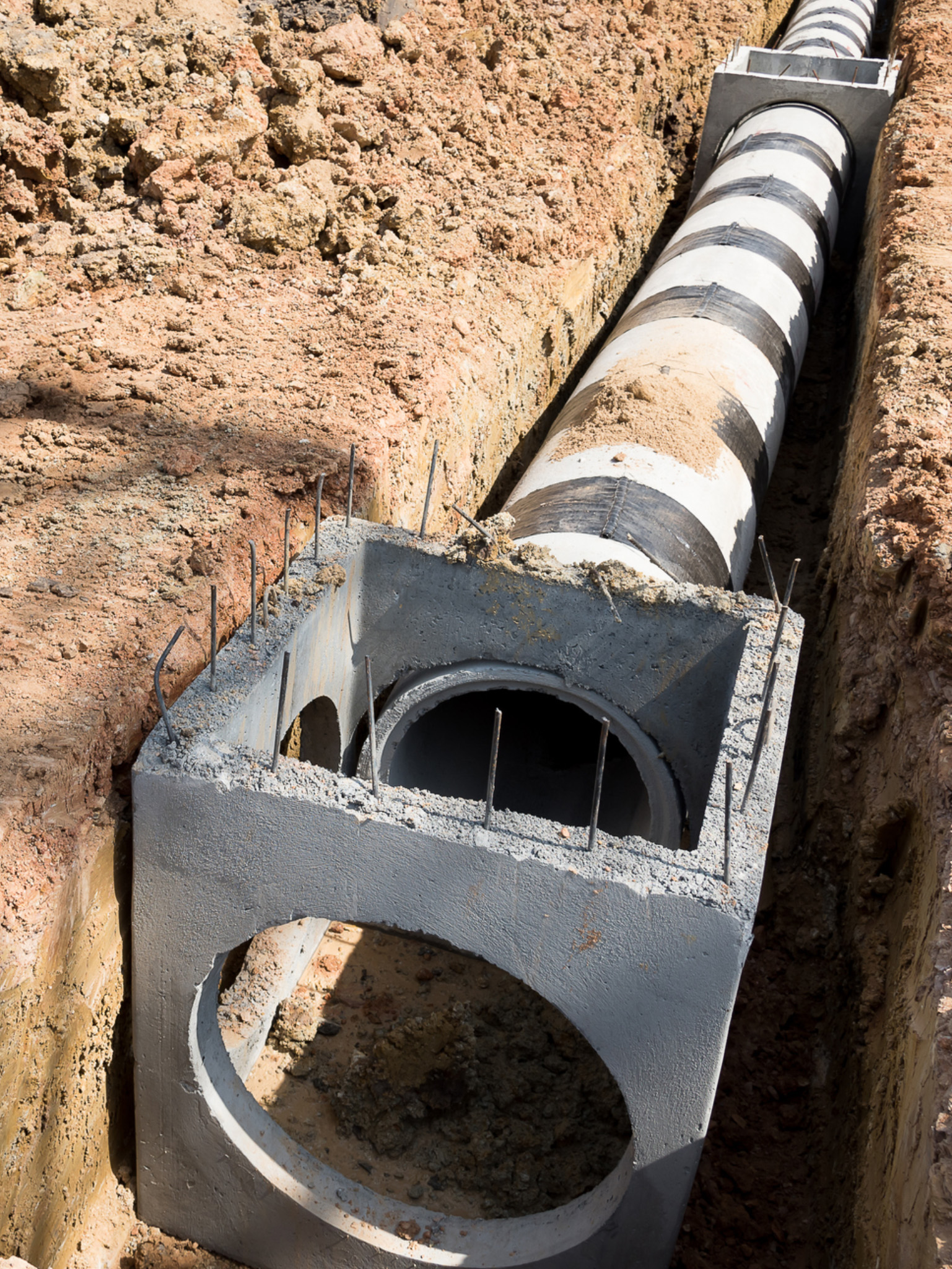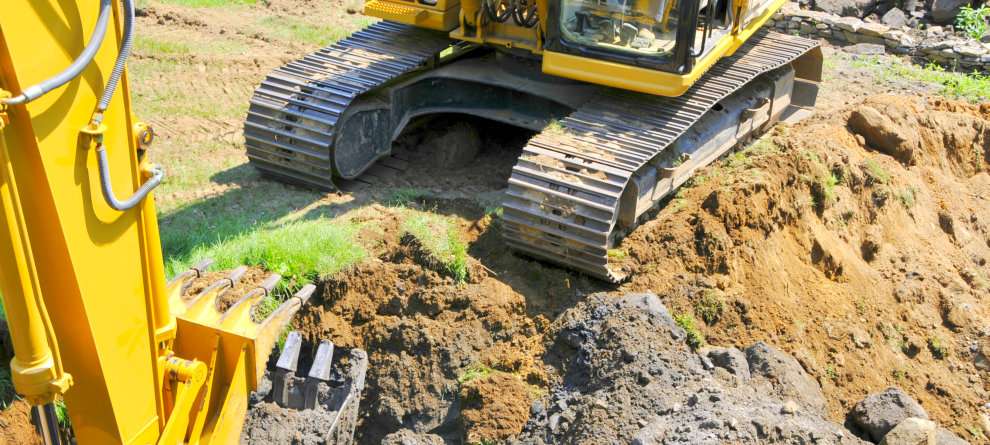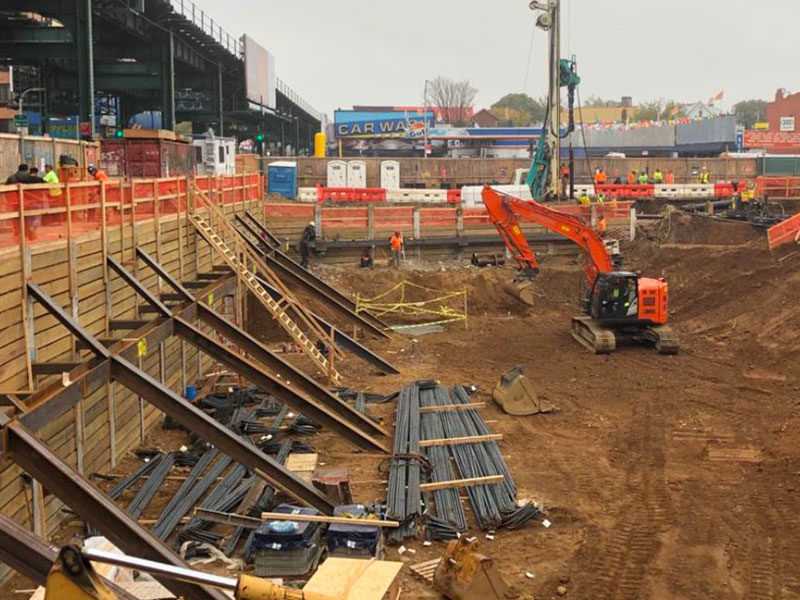Lancaster Trenching - Expert Trenching Solutions in Lancaster, Ohio
Lancaster Trenching - Expert Trenching Solutions in Lancaster, Ohio
Blog Article
Thorough Exploration: The Scientific Research Behind Superior Excavation Practices
The world of excavation techniques is a domain name where scientific research links with craftsmanship to unearth the mysteries concealed under the planet's surface. From ancient hand tools to modern-day hydraulic excavators, the evolution of excavation techniques has been a testament to human ingenuity and technical innovations. What absolutely establishes premium excavation techniques apart is a deep understanding of geological concepts, paired with the utilization of advanced tools and methodologies. By exploring the scientific research behind these practices, we can uncover the keys that exist below our feet and value the precision and competence that enter into every dig.
Development of Excavation Strategies
Throughout history, the development of excavation techniques has actually played a crucial function in advancing building practices and archaeological explorations. From the primary tools made use of by our ancestors to the innovative machinery utilized in modern-day times, the progression of excavation methods has actually considerably changed exactly how we come close to numerous projects.
In old times, hands-on labor with standard devices such as pickaxes, shovels, and wheelbarrows was the key technique of excavation. This labor-intensive procedure limited the depth and scope of excavations, often causing sluggish progress and restricted accessibility to particular sites. Nevertheless, as civilizations advanced, so did the tools and methods used for excavation.
The Industrial Revolution marked a turning factor in excavation techniques with the introduction of steam-powered machinery. In modern times, modern technology plays a crucial role in excavation, with developments like GPS systems, drones, and 3D scanning enhancing accuracy and performance in the area.
Function of Innovation in Excavation

The combination of advanced technology has actually essentially revolutionized the area of excavation, improving precision and performance to unmatched degrees. Among the key technical developments that has substantially affected excavation techniques is the use of GPS systems. These systems permit accurate mapping of excavation websites, allowing drivers to properly locate underground energies and structures. Furthermore, making use of telematics in excavation devices has enabled real-time surveillance of equipment performance, bring about positive upkeep and enhanced functional productivity.
Additionally, the arrival of 3D modeling and simulation software application has streamlined the preparation process for excavation projects. Drivers and designers can currently imagine the whole excavation procedure prior to beginning, optimizing and determining prospective difficulties workflow. Combined with this, the application of drones in excavation activities has facilitated aerial surveys, volumetric dimensions, and website inspections with unrivaled speed and precision.
Geological Principles in Excavation
An understanding of geological concepts is vital for making sure the structural integrity and stability of excavation sites. Geological elements play a vital duty in establishing the usefulness and safety and security of excavation tasks (excavating ohio). One essential geological principle to consider is the type of soil or rock present at the website. Various dirt kinds, such as sand, crushed rock, or clay, have varying levels of security and call for various excavation methods. For example, cohesive soils like clay might call for extra support to avoid collapses, while sandy soils might be vulnerable to disintegration during excavation.
In addition, the geological framework of the area, including mistakes, fractures, and rock formations, have to be meticulously examined to identify possible threats and obstacles. Excavating near mistake lines or unsteady rock developments can lead to instability and prospective risks. By performing detailed geological studies and analysis, excavators and designers can create techniques to alleviate dangers and make certain the effective conclusion of excavation projects. Ultimately, integrating geological principles right into excavation practices is crucial for accomplishing secure, reliable, and lasting results.

Most Recent Tools for Excavation
In the realm of excavation methods, modern developments in devices have actually reinvented the performance and accuracy of excavation processes. Among the most recent tools making waves in the industry is the use of drones furnished with innovative imaging technology. These drones can provide comprehensive aerial surveys of excavation sites, using real-time information on topography and possible hazards. This info aids in much better preparation and Our site decision-making throughout the excavation procedure.
An additional cutting-edge device obtaining popularity is the implementation of 3D printing innovation for creating personalized excavation equipment. This permits the manufacturing of specialized devices that are customized to the details requirements of a job, raising performance and decreasing downtime.
Additionally, developments in materials scientific research have actually resulted in the development of stronger and extra sturdy excavation devices. dump truck companies in ohio. Tungsten carbide-tipped excavator accessories, for instance, deal remarkable efficiency in challenging ground conditions, improving performance on-site
Science's Effect on Excavation Practices

Additionally, improvements in products science have actually led to the production of stronger, much more long lasting excavation devices and tools. The use of composite materials in shovels and diggers has enhanced their efficiency and long life, inevitably raising performance on excavation sites. Additionally, clinical research on dirt technicians and geotechnical design has actually given valuable insights into soil habits, permitting excavation professionals to make enlightened choices relating to excavation techniques and dirt stabilization techniques. Generally, scientific research remains to drive technology and improvement in excavation practices, making excavation tasks more effective, cost-effective, and lasting.
Conclusion
In verdict, the advancement of excavation techniques has been considerably influenced by developments in modern technology and a deeper understanding of geological concepts. The current devices and tools used in excavation have actually boosted performance and accuracy in click for more info the area. The application of clinical knowledge has considerably enhanced excavation techniques, leading to more lasting and reliable approaches for excavating various types of materials.
In the world of excavation practices, contemporary developments in tools have actually transformed the performance and precision of excavation procedures. By leveraging clinical principles, the excavation market has been able to dramatically improve efficiency, accuracy, and security in excavation procedures. GPR enables excavation groups to non-invasively check and map subsurface structures, energies, and possible threats, allowing them to prepare excavation jobs with better precision and lowered threat of crashes.
Furthermore, clinical research study on soil auto mechanics and geotechnical engineering has actually provided beneficial insights into dirt habits, allowing excavation experts to make informed decisions regarding excavation techniques and dirt stabilization strategies. In general, science proceeds to drive innovation and renovation in excavation techniques, making excavation tasks more effective, my response cost-efficient, and lasting.
Report this page